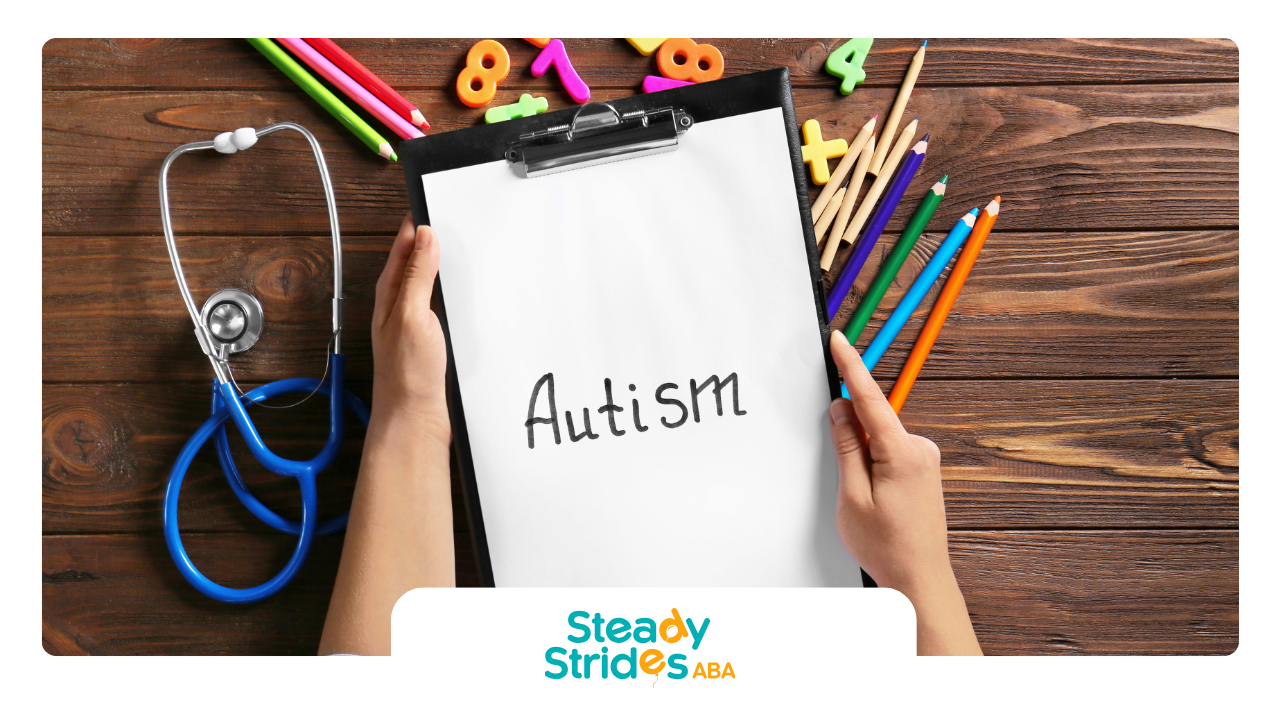The autism spectrum includes many experiences. For some people, communication challenges are a big part of their life. One interesting part of autistic communication is the "autism accent." This unique aspect of communication and speech habits can cause curiosity and sometimes lead to misunderstandings. This guide will help explain the details of the autism accent. It aims to help people understand this often-overlooked part of autism better.
What is Autism Accent?
"Autism accent" refers to the special ways that some autistic people, including autists, speak, which may include abnormal speech patterns. This is not like a regional accent, such as British or Australian. Instead, it is a different way of talking that shows changes in rhythm, tone, and how words are said. These speech patterns are not something people choose to do. They come from the different brain functions linked to autism.
It's good to remember that not all autistic people have an autism accent. What makes up this accent can be very different for each person. Some people may speak with slight changes, while others might have more noticeable differences.
Defining Autism Accent in Simple Terms
Imagine language development as a journey. People with autism spectrum disorder may travel this journey in their own way. This shapes how they communicate. One example is the autism accent. It is where the usual patterns and sounds of speech change.
Think of it as a song played in a different key. The notes remain the same, but how it feels and sounds is different. Likewise, people with autism might use the same words and grammar as others, but their style comes off as unusual.
This difference isn't a mistake or a problem. It shows the variety in how our brains work within the autism spectrum. We should approach autism accent with open minds and respect. It is a true and valid way to communicate.
How Autism Accent Differs from Other Speech Patterns
Knowing the differences in autism speech patterns from other speech styles requires understanding their unique traits. Some speech features may look similar to other conditions, but the mix of traits linked to autism’s brain differences makes it unique.
For example, both autistic and neurotypical individuals can have a regional accent, but for different reasons. Neurotypical people may pick up accents socially, while autistic individuals may show atypical neurological patterns because they are more sensitive to sounds or find it hard to copy speech patterns accurately, a phenomenon sometimes referred to as a wandering accent.
Here are some key differences:
- Origin: It comes from brain differences in autism, not just social learning.
- Consistency: Changes less in social situations, unlike chosen accent changes.
- Intention: This happens naturally as part of communication, not a choice.
The Origin and Causes of Autism Accent
The development of an autism accent is complicated and not completely clear. Still, research shows that both brain activity and various factors, including environmental factors, play a role in how this accent forms. These factors affect how people with autism understand language acquisition, use their voice, and read social signals.
Genetics is important, but the environment is also significant. Early language learning and social interaction are key parts that influence the development of an autism accent. This complicated relationship points out the need for different ways to understand and help people with this speech pattern.
Neurological Underpinnings of Autism Accent
At the center of autism are special brain patterns found in autism spectrum disorder. Research shows that these brain differences, especially in areas linked to learning and using language, help explain the unique speech patterns in autistic people.
For example, studies find that Broca's area, which is vital for making speech, works differently in autistic individuals when they talk. Also, differences in how the brain hears sounds might change how autistic people understand and create speech sounds. This can lead to different pronunciations and intonations.
These brain factors show that autistic speech patterns aren't just choices or habits. They are a key part of how the autistic brain handles language. This highlights the need for acceptance and understanding.
The Role of Environmental Factors in Shaping Autism Accent
Neurological factors set the stage for autism, but environmental factors play a big part in shaping its specific features. One key part of language development is social interaction, which has a significant role in speech production.
Autistic children may not have enough chances for social interaction. They might find it hard to connect with other kids, which affects how much they hear different speech patterns and their anxiety levels. This lack of social interaction in England can make it tough for them to adjust their communication style based on social cues. This might lead to a different accent forming over time.
Also, early help, such as speech therapy, is very important for improving communication skills. However, it may change some features of the accent. Therapists work hard to make speech clearer and easier to understand. As a result, the accent might get softer, but it may not go away completely, leaving a special mark on how a person speaks.
Characteristics and Features of Autism Accent
One common way of speaking seen in people with an autism accent is using a monotone voice. This means their voice does not change in pitch like normal speech. Instead, it stays at a steady level, which can make their voice sound robotic or sing-song.
Another feature of the autism accent is repetitive speech, often called echolalia. This is when a person repeats words or phrases, possibly drawn from media such as TV shows. They might do this right after they hear them or even later. Echolalia can help with comfort or communication, but this repetition adds to the unique rhythm of an autism accent.
Identifying Common Speech Patterns and Rhythms
Identifying the speech patterns and rhythms linked to an autism accent can help us understand how an autistic person communicates. It's key to recognize that these features can differ a lot from one person to another. What one person shows may not be seen in someone else.
Here are some common speech patterns and rhythms tied to an autism accent:
- Monotone or sing-song intonation: Speaking with a limited pitch range, leading to a flat or rhythmic sound in speech.
- Unusual pauses and pacing: Putting pauses in odd spots that break the smooth flow of talking.
- Repetitive speech (echolalia): Repeating words, phrases, or sounds. This can happen right away or after some time.
- Atypical volume control: Speaking too loud or too quiet, often without the changes that fit different social situations.
- Stilted or overly formal language: Using language that feels too formal, technical, or like something from a book, in contrast to casual talk.
Noticing these speech patterns is not about putting people into boxes but about raising awareness. Understanding these differences can change how we communicate to create better connections with autistic people.
The Impact of Pronunciation and Articulation
Pronunciation and articulation are important for clear speech. However, these can be influenced by an autism accent, which may include variations in prosody. This does not mean that people with an autism accent cannot say words correctly. Instead, it shows that they may form sounds differently than usual speech patterns.
These differences can lead to changes in some vowel or consonant sounds. This may make it hard for listeners who are not familiar with the accent to understand the words. Some individuals might also have difficulty with the physical parts of speaking. This includes coordinating the tongue, lips, and teeth needed for clear sounds.
It is important to know that these speech challenges do not reflect a person's intelligence or how they think. They are simply how the brain processes and produces speech in its own unique way. This highlights the need for patience and effective communication strategies when speaking with individuals who have an autism accent.
Navigating the Challenges
Autism can create challenges in communication, particularly in social communication. These challenges can cause misunderstandings and frustration. They may also lead to social isolation. It can be hard for some people to understand. Additionally, they might face judgment and negative stereotypes. This can seriously affect how they connect with others.
Just as importantly, how society views autism can hurt a person's self-esteem and mental health. It's important to see these challenges. We need to address them with empathy and understanding. We should create places that celebrate neurodiversity. Let’s promote communication that is open and accessible for everyone.
Communication Hurdles with Autism Accent
One big challenge for people with an autism accent is breaking down communication. Their unique challenges, special rhythm, tone, and way of speaking can make it hard for neurotypical individuals to understand what they are saying. This can lead to misunderstandings and frustration for both sides.
In social situations, these issues can feel very tough. Talking with others can be fast and complicated. For someone with an autism accent, this can make feeling understood difficult. This can cause anxiety, withdrawal, and even social isolation. It shows why we need patience. Clear communication methods and adapting to different speaking styles are important.
Using simple words, avoiding idioms or sarcasm, and giving enough time for responses can really help close the communication gap. It's also important to remember that communication involves both people. Actively listening, asking questions for clarity, and truly trying to understand can really change things for the better.
Societal Perception and Its Effects on Self-Esteem
Unfortunately, many people have a limited understanding of the presence of an autism accent. They often negatively view unique speech patterns. Some may mistake these patterns for a lack of intelligence, being socially awkward, or even rudeness. This leads to harmful stereotypes and bias. Such misunderstandings can cause social exclusion and discrimination. It can also limit chances in education, work, and personal relationships.
For those with autism accent, dealing with these negative views can hurt their self-esteem. Being judged or misunderstood for something that is part of how they are wired can cause anxiety. It may make them withdraw from social situations and lower their confidence in what they can do.
To build a more accepting society, we need to challenge these misconceptions and spread awareness about autism accent. By learning more about the neurological roots of these unique speech patterns, we can help lessen stigma. This can open up spaces where people with autism accent feel respected, appreciated, and free to express themselves.
Strategies for Supporting Someone with Autism Accent
Supporting someone who has an autism accent starts with understanding and acceptance. It's important to see that their accent is not a problem but a sign of their neurodiversity. Using effective ways to communicate, along with patience and empathy, can help build strong connections and a caring atmosphere.
Speech therapy can help make speech clearer, but we should focus on improving communication, not getting rid of the accent completely. In the end, giving unconditional love and accepting their unique communication style is the most important thing.
Effective Communication Techniques
Effective communication with someone who has an autism accent needs empathy, patience, and a flexible communication style. It’s not about changing them but about helping connect and understand each other.
Some simple changes can really help. Using clear and direct language is important. It’s good to avoid idioms or jokes and give them enough time to process what you are saying. Visual aids, like pictures or written words, can be useful to support spoken conversation.
Most importantly, showing real respect and being ready to listen is key. By practicing active listening, asking clear questions, and showing interest in their view, you can create a safe space for communication to grow. Remember, it's about connecting with them, not just sharing information.
Incorporating Speech Therapy and Other Interventions
Speech therapy can be an invaluable resource for individuals with autism accent, particularly in addressing specific articulation, pronunciation, and fluency challenges. Speech-language pathologists (SLPs) can work with individuals to develop personalized strategies and exercises that target their unique needs.
It's crucial to approach speech therapy to enhance communication, not eliminating the accent entirely. The focus should be on improving clarity and intelligibility while respecting the individual's natural speaking style.
In addition to speech therapy, other interventions, such as social skills groups or occupational therapy, can provide support in areas related to social interaction and sensory sensitivities, further enhancing overall communication and well-being.
| Intervention | Potential Benefits of ABA Therapy | Potential Benefits of ABA Therapy |
|---|---|---|
| Speech Therapy | Articulation, pronunciation, fluency | Improved clarity, reduced frustration, enhanced confidence |
| Social Skills Groups | Social cues, conversation skills, nonverbal communication | Increased social comfort, improved interactions, reduced anxiety |
| Occupational Therapy | Sensory processing, motor skills, coordination | Enhanced sensory regulation, improved motor control, increased participation in activities |
Understanding the unique aspects of communication, such as the autism accent, can greatly improve interactions and support. If you're looking for ABA therapy near me for kids, local providers can help your child enhance their speech, social skills, and communication abilities. Reach out today to discover how ABA therapy can create meaningful progress for your child.
Conclusion
Autism Accent is a special way of speaking. It needs our understanding and support. When we look into its background, features, and challenges, we can create better places for communication. Empathy, patience, and speech therapy are important to help people with autism accent.
Promoting acceptance and providing the tools needed to communicate well is key. Remember, taking small steps to understand can greatly help someone with autism accent. If you need help supporting individuals with autistic accent, ask for expert advice and resources. We can work together to build a kinder and more inclusive community.
Steady Strides ABA is Texas' trusted provider of ABA therapy, offering customized programs that help children with autism develop essential communication skills, including addressing unique speech patterns like the autism accent. Their expert team tailors each session to foster greater understanding and connection.
If you’re ready to support your child’s communication growth, contact Steady Strides ABA today and see how their personalized approach can make a lasting difference.
Frequently Asked Questions
Can Autism Accent Improve Over Time?
Yes, the traits of an autism accent can change over time. It may not go away completely. However, speech therapy, language development, and personal experiences can help make speech clearer and easier to understand.
Are There Specific Therapies for Managing Autism Accent?
There is no one therapy specially made to "manage" the accent often linked to autism. However, speech therapy can help a lot. It can be adjusted based on what each person needs. This type of therapy looks at the speech and language challenges tied to autism spectrum disorder.
Sources:
https://carescribe.io/blog/what-is-an-autism-accent/
https://neurospicynonsense.com/the-autism-accent/
https://thelifeautistic.com/2018/06/21/the-life-autistic-whats-with-the-accent/
https://medium.com/the-shortform/the-autistic-accent-de48194d62e3
https://adc.bmj.com/content/98/Suppl_1/A36.1
https://onlinelibrary.wiley.com/doi/full/10.1002/aur.3300












